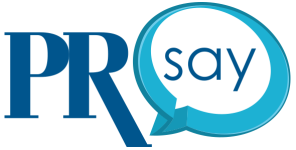In today’s fast-paced workplaces — especially in the PR and communications profession — few employees truly lack work to do. While a recent Forbes article, “Rise of Boreout Syndrome: The Opposite of Burnout With Similar Signs,” suggests that bore-out is the opposite of burnout, I see them as close cousins, particularly in how they impact engagement.
Bore-out isn’t about sitting idle or watching the clock; it’s when people stay busy but feel disconnected from the purpose, meaning or impact of their work.
Why does this matter?
Gallup’s State of the Global Workforce Report found that global employee engagement fell by two percentage points in 2024, costing the world economy an estimated $438 billion in lost productivity.
The danger for each organization is clear. That sense of numbness — employees going through the motions without real engagement — can be just as damaging as burnout, creating significant financial and cultural barriers to success.
Spotting bore-out
The same Gallup report shows only 21% of employees are engaged, meaning that 8 out of 10 are disengaged in some way — and bore-out is often at the core.
Employees showing signs of bore-out might say things like:
- “I’m not challenged, even while working long hours.”
- “I’m good at my job but feel drained.”
- “My talents and skills aren’t fully utilized.”
Picture an employee nodding along as a new assignment is handed to them — mirroring the behaviors highlighted in a recent PRsay article on quiet quitting. Later, they dismiss it as “just one more thing.” They’re not under-worked, but under-inspired. Over time, that “I just don’t care” attitude quietly erodes productivity, culture and retention.
4 tactics to boost engagement
1. Tie work to personal growth.
Employees disengage when they can’t see “what’s in it for me.” Managers often assume, “This is just the job,” but employees need work that connects to their development.
- Open the conversation. Ask: “Does this work excite you?” If not, then explore how to adjust it to spark motivation while meeting expected outcomes, or assign it to someone whose goals it better supports.
- Create stretch projects. Research shows that employees are more engaged when learning and solving problems. A task that feels “too easy” may get done quickly, but over time, it erodes motivation.
- Leverage cross-training. Shift work that senior employees have already mastered to junior colleagues to build their skills, while seniors focus on oversight and strengthening leadership abilities.
- Reconsider workplace flexibility.
A recent Mercer report emphasized that remote and hybrid policies should be tailored to roles, not enforced through blanket mandates. Gallup research reinforces this: Employees who spend part of their week working remotely report higher engagement and well-being than those who are fully on-site without a clear purpose.
In fact, Gallup’s 2023 State of the Workplace Report showed that 71% of hybrid employees are engaged, compared to 62% of fully remote and 50% of fully onsite employees.
This isn’t about avoiding work; it’s about enabling people to perform at their best. As a solution, offer greater flexibility for roles that aren’t office-critical. Design purposeful in-office time for collaboration and connection. For roles that must be on-site, tie office presence directly to outcomes so employees see the purpose behind it.
- Leverage personal motivation.
Managers are the linchpin of engagement. As Harvard Business Review’s article “The Leader as Coach” notes, leaders who listen deeply and connect with employees can boost morale and drive stronger business results.
Coaching conversations bridge the gap between daily tasks and personal ambitions, aligning motivation with organizational goals.
A simple question like “What motivates you most right now?” can reveal valuable insights. For one employee, it may be senior-level visibility; for another, flexibility; for yet another, the chance to learn a new system. This gives managers a roadmap to better support their teams.
- Build a culture of purpose.
Ultimately, employees need to see how their work connects to the organization’s mission. Leaders should consistently, ideally monthly, communicate:
- “Here’s where we’re going.”
- “Here’s how your work makes an impact.”
- “Here’s why it matters.”
Then, close the loop by asking: “How does this connect with how you see your role, and is there anything we should adjust so it feels meaningful to you?”
This not only ensures that employees feel heard and understood, but also turns bore-out into buy-in.
The payoff
Yes, tailoring assignments, coaching employees and rethinking policies may feel like extra work up front. But the payoff is undeniable: higher engagement, stronger retention, and greater productivity and innovation.
As the same Forbes article notes, prolonged disengagement can undermine performance just as much as burnout.
When employees feel important, challenged, learning and connected to purpose, organizations thrive. Keeping bore-out silent isn’t just a people risk, it’s a business risk.
Gina Larson is an ICF-certified executive coach and Founder & CEO of StandUp HR. Organizations hire Larson to strengthen HR and people practices that align with business goals and deliver measurable results. As an executive coach, she partners with leaders to build self-awareness, elevate performance and develop high-performing teams that drive sustained success. Connect with her at GinaLarson@StandUpHR.com or on LinkedIn.
Photo credit: nina/peopleimages.com







